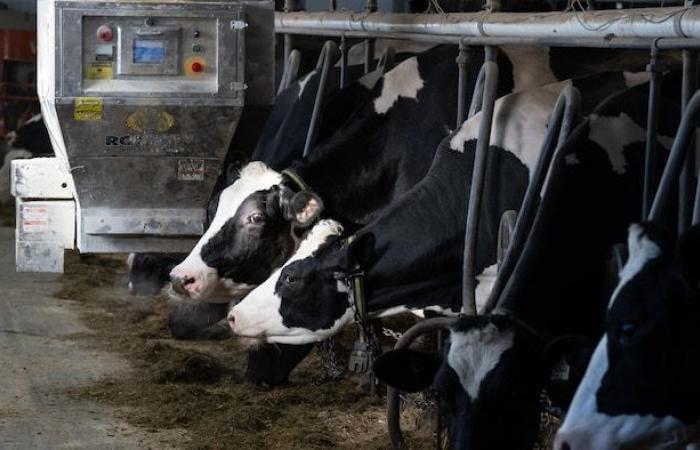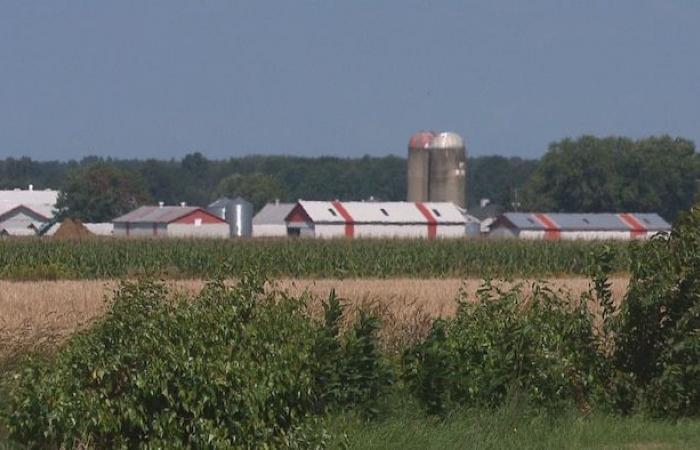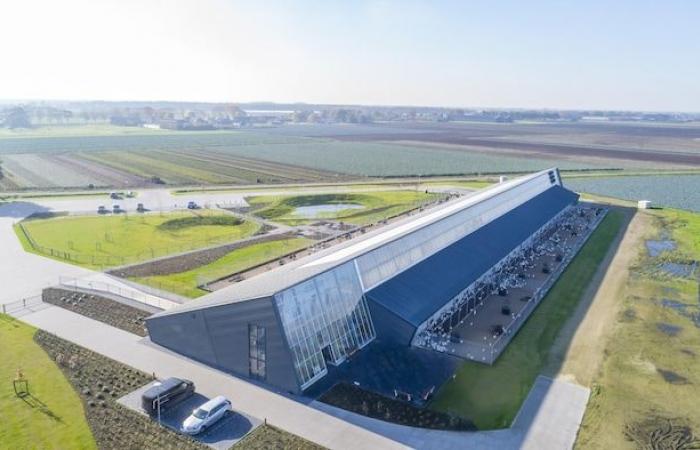Canada is one of the last countries to maintain a system for supplying the offer in agriculture. In place for more than 50 years, this model has been the subject of increasing commercial pressure, especially from the United States. At a time when new concessions are feared, this system should be preserved, reform it or end it? And at what price?
In Canada, the supply management system governs the production of milk, eggs and poultry. Its objective is to maintain a balance between supply and demand, stabilize prices and guarantee decent income for agricultural producers.
It is a system that has proven itself and which also ensures food security
specifies Daniel-Mercier Gouin, retired professor of agroeconomics at Laval University.

open in full screen
Daniel-Mercier Gouin, agroeconomics expert and retired professor at Laval University. (Archives photo)
Photo: Radio-Canada / matches Chouinard
This system is based on three essential elements:
- first of all, it provides producers with guaranteed prices that cover their production costs.
- Then, he established quotas, which constitute the heart of the system.
- Finally, the Canadian milk, eggs and poultry market is protected by high import prices, which reach up to 300 % for certain dairy products.
How are quotas calculated?
In the case of milk, a quota corresponds to the production of 1.2 kg of fat per day, more or less the daily production of a cow. To simplify, one can imagine that a producer who has a flock of 100 cows has between 100 and 120 quotas.
For eggs, a quota represents a laying hen. In poultry, the quotas are calculated in square meters of production surface.
Regardless of the sector – milk, eggs or poultry -, the quotas are adjusted each year to follow the evolution of demand and demographic changes.
However, over the business negotiations with the United States and the European Union, openings have been conceded in these sectors.
For example, Today, between 10 % and 14 % of the Canadian dairy market is now accessible to imports. This opening allows the entry of a certain volume of foreign products without a price; High rights apply only beyond these thresholds.
It is this gradual opening that arouses growing concern among agricultural producers subject to the supply management system, which fear that it will ultimately lead to its dismantling.
Quotas values that explode
Each year, depending on the evolution of the market, the authorities set a national production quota in each production area under management of the offer they distribute to already active farmers. These quotas can sometimes be reduced, but they generally increase, carried by demographic growth and by food demand.
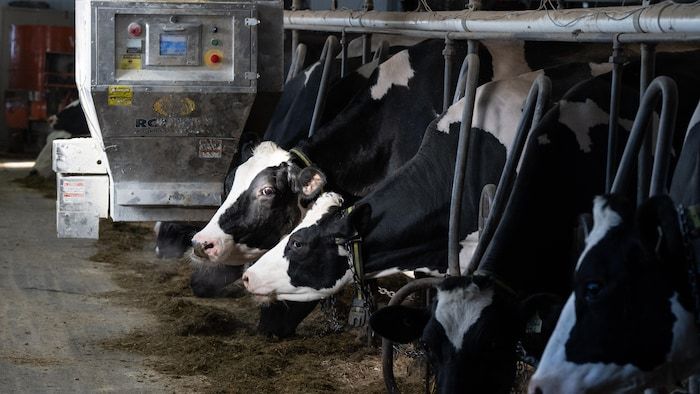
Open in full screen
For a farm of a hundred cows, dairy quotas alone can be worth up to $ 2.4 million, according to Michel Saint-Pierre. (Archives photo)
Photo: Canadian press / Christinne Muschi
In the dairy sector, for example, quotas have increased by around 27 % in the past ten years. Even if they are attributed free of charge, these quotas gain value in a parallel market.
When a producer sells his dairy farm, he yields the land, buildings and quotas, that is to say production rights.
The first transactions were made at derisory prices
explains Michel Saint-Pierre, former local agriculture assistant in Quebec and today co-president of the Jean-Garon Institute, a reflection group on agricultural issues. I was at the bank and I financed the first transaction in poultry in the 1970s. It was sold for $ 2.50 per square meter
he recalls.
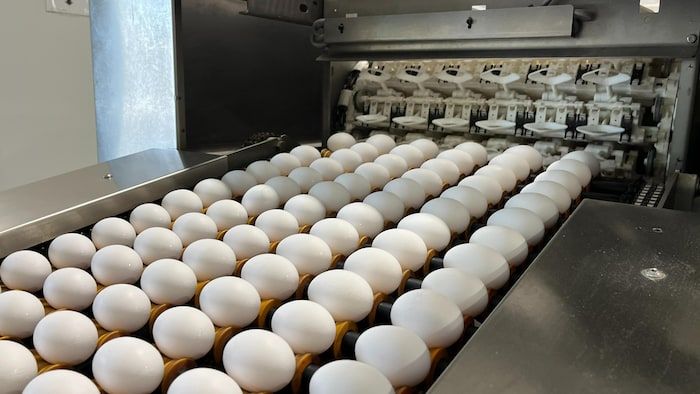
Open in full screen
Consumption eggs, incubation eggs, milk and its derivative products, chicken and turkey are products subject to supply management.
Photo : Radio-Canada / Jean-Michel Cotnoir
Today, a quota in the poultry area is between $ 1,500 to $ 2,500 per square meter in a building in Quebec. It is even more expensive elsewhere in the country. In the egg sector, the quota is estimated at $ 245 per layer. In the dairy sector, it takes $ 24,000 per quota and up to $ 50,000 in Western Canada, where dairy farms are less numerous.
Do the calculation: if I want to sell my farm in Quebec or Ontario with a hundred cows, so around 100 dairy quotas, at $ 24,000 per quota, it already represents $ 2.4 million. It is only for quotas. We have not even talked about the value of the land or buildings yet.
Debt bubble?
According to estimates, the total value of quotas linked to supply management in Quebec is today between $ 12 and $ 15 billion. It is a completely artificial value
estimates Michel Saint-Pierre, who is concerned about the consequences of these amounts on the concentration of farms and on agricultural debt.
Quebec farms are almost twice as indebted as the Canadian average
He says based on statistical Canada data. The management of the offer ensures a certain stability of prices, which facilitates access to credit. Result: boxes and banks agree to lend themselves based on the value of quotas, sometimes up to 50 % of this value.

Open in full screen
Desjardins CEO Guy Cormier fears that the “next big crisis management” will occur in the agricultural world.
Photo : Radio-Canada
A few months ago, Guy Cormier, president and chief executive officer of Desjardins, warned, during an interview with a journalist from the Canadian press, that a serious crisis could emerge from the agricultural sector. According to him, American threats against the supply management system are worrying.
Michel Saint-Pierre also fears the end of supply management and its effect for farmers who have quotas.
He illustrates his fear by an analogy: The day Uber arrived in the taxi sector, what did the drivers say, especially the youngest? They found it insane. “I paid $ 200,000 to get a taxi license in Montreal,” they said. And suddenly, Uber arrives. That’s the opening of the markets
he explains.
Already, the Federation of milk producers has capped any increase in the value of quotas. On the side of egg producers, the new quotas have not had any value for several years.
In the poultry sector, similar measures will be implemented this summer to supervise the increase in the value of quotas.
The price to abandon this system?
New Zealand is often cited as an example since it was the first to fully open its agricultural market in 1985. This country quickly reoriented itself towards export by focusing on centralized cooperatives.
You can’t compare New Zealand in Canada
believes the ex-professional Daniel-Mercier Gouin. It is an island with a Clément climate that requires fewer buildings, and New Zealanders have developed the export market 40 years ago.
Australia, for its part, abolished its supply of the offer in 2000. To mitigate the shock in the dairy sector, the government has established a temporary tax of 11 cents per liter of milk for eight years. These funds were used to support producers during their transition. However, despite these measures, several producers have left industry.
Finally, the European Union also ended the management of the offer in 2015.
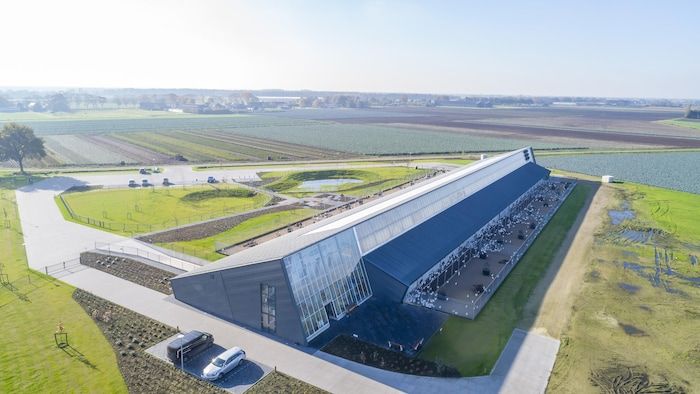
Open in full screen
The Kipster farm, in Castenray, in the Netherlands, near the German border. (Archives photo)
Photo : Kipster
In the Netherlands, where a market of quota with market value resembled the Canadian model, the government announced the end of the system almost a decade in advance, without planned compensation.
The transition was difficult, but farmers had time to prepare for it.
Between reform and rupture, a choice to make
In the debate on supply management, a point deserves to be underlined: the milk, eggs and poultry sectors depend neither subsidies or government aid programs.
Thanks to this system, it is not the taxpayers who financially support these productions.
If we abolished the management of the offer, Canada would have no choice but to follow the example of the United States or Europe, that is to say subsidizing producers
explains Daniel-Mercier Gouin.
The management of the dissected offer
ENGINE MAI FIRSTAll terrain

Launch listening| 12 min
The other agricultural sectors – pumps, pork or beef – already benefit from aid programs funded in part by public money.
It is not true that we will leave the producers alone in front of the market. So the real question is: how much will the government cost an abandonment of supply management?
We are not in a position to declare the end of the system or even to weaken it by pricing concessions: it is too fragile
considers Michel Saint-Pierre. In addition to being indebted, we do not have winning conditions to massively embark on export.
Indeed, south of the border, the only state of Wisconsin produces more milk than all of Canada.
For the co -author of the book Our drift agriculturerecently published by Leméac editions, an awareness of the value of this system is essential, not to mention the creation of mechanisms to correct its flaws, in particular with regard to the value of quotas.
It would be preferable to adapt it to current realities or to consider a framed transition rather than a precipitated outing
believes Mr. Saint-Pierre.
We must avoid at all costs to find us cornered at the foot of the wall.



